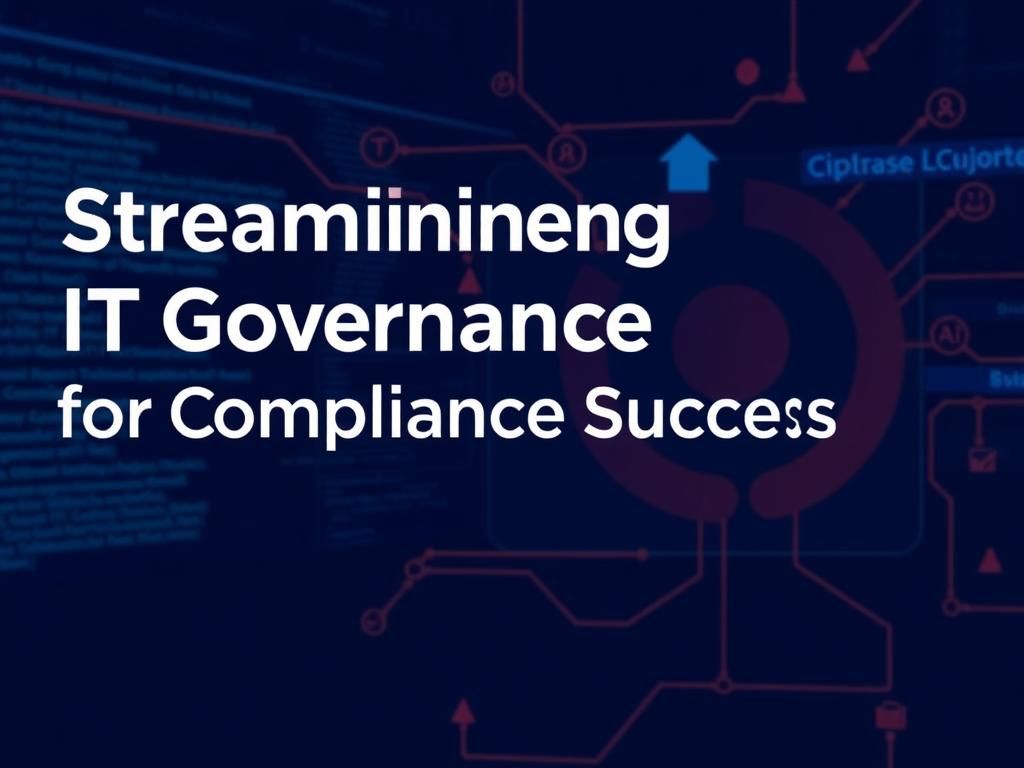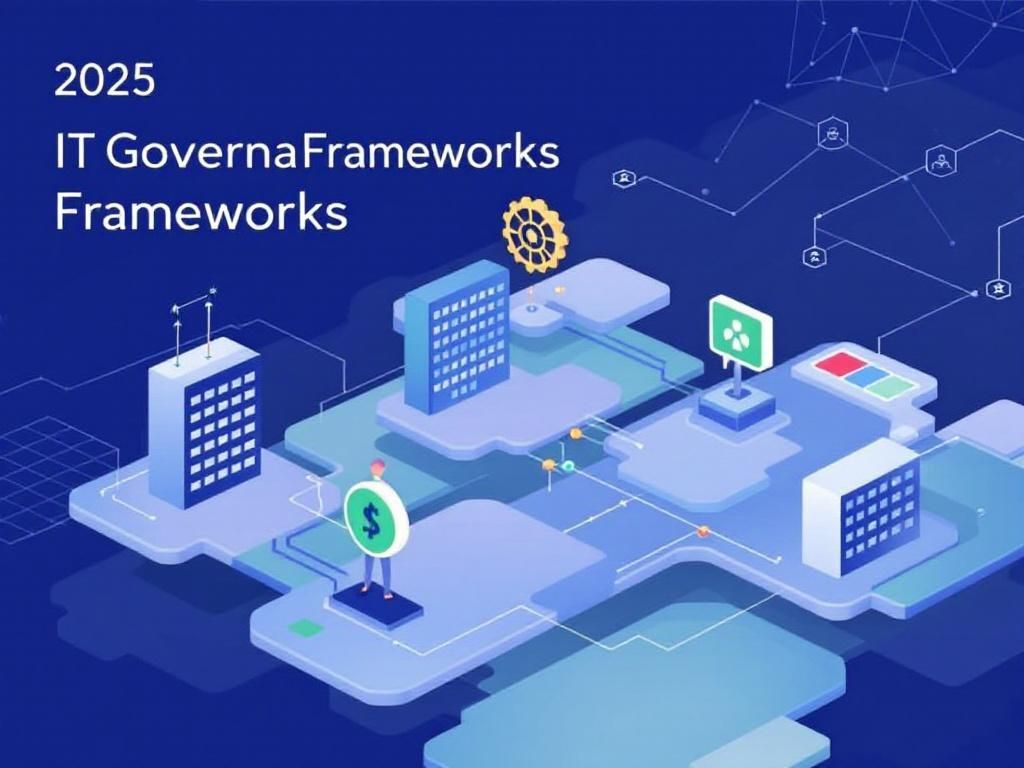Streamline IT Governance for Compliance Success
Discover effective strategies to streamline IT governance and ensure compliance success for your organization in today's regulatory landscape.

In today’s rapidly evolving technological landscape, the significance of IT governance cannot be overstated. Organizations are continually challenged to align their IT strategies with business objectives while navigating a complex maze of regulatory requirements. Effective IT governance not only ensures compliance but also enhances overall operational efficiency, enabling businesses to thrive in competitive markets.
Table of Contents
Understanding IT Governance
IT governance refers to the processes, structures, and relational mechanisms that ensure that an organization’s IT supports and enables the achievement of its goals and objectives. It encompasses a broad range of practices and frameworks that guide decision-making and strategy formulation regarding IT investments and operations.
Key Components of IT Governance
- Strategic Alignment: Ensuring that IT investments are aligned with business goals.
- Risk Management: Identifying and mitigating risks associated with IT and data management.
- Value Delivery: Guaranteeing that IT delivers value to the business and enhances performance.
- Performance Measurement: Monitoring and measuring IT performance against established benchmarks.
- Resource Management: Efficiently managing IT resources, including personnel, technology, and budgets.
The Importance of Compliance
With increasing regulations such as GDPR, HIPAA, and PCI DSS, organizations must prioritize compliance to avoid legal repercussions, financial penalties, and damage to their reputation. Compliance goes beyond mere adherence to laws; it requires a proactive approach to managing data, security, and privacy.
Benefits of IT Governance in Achieving Compliance
- Structured Framework: An established governance framework provides a structured approach to managing compliance, ensuring that all necessary policies and procedures are in place.
- Enhanced Risk Mitigation: Through effective governance, organizations can better identify and mitigate risks associated with non-compliance.
- Improved Stakeholder Confidence: Transparency in governance builds trust among stakeholders, including customers, partners, and regulatory bodies.
- Efficiency in Operations: Streamlined processes lead to operational efficiency, reducing redundancy and enhancing productivity.
- Better Decision-Making: Data-driven insights gathered through governance practices facilitate informed decision-making.
Frameworks for Effective IT Governance
Various frameworks can be employed to establish effective IT governance. Organizations should choose a framework that aligns with their specific needs and regulatory requirements.
COBIT
COBIT (Control Objectives for Information and Related Technologies) is a comprehensive framework that helps organizations manage and govern their IT. It provides guidelines for aligning IT goals with business objectives, managing risks, and ensuring compliance.
ITIL
ITIL (Information Technology Infrastructure Library) focuses on aligning IT services with the needs of the business. It emphasizes service management and includes best practices for delivering high-quality IT services.
ISO/IEC 38500
This international standard for IT governance provides a framework for the evaluation and improvement of IT governance practices. It emphasizes the responsibilities of governing bodies and the importance of effective management.
Implementing IT Governance
Implementing an effective IT governance framework involves several key steps:
1. Assess Current Practices
Begin with a thorough assessment of existing IT governance practices and identify gaps that need to be addressed.
2. Define Governance Structure
Create a governance structure that outlines roles and responsibilities, including the establishment of a governance council or committee.
3. Develop Policies and Procedures
Draft comprehensive policies and procedures that align with regulatory requirements and business objectives.
4. Implement Technology Solutions
Leverage technology to automate compliance processes and enhance monitoring capabilities.
5. Train Employees
Invest in training programs to ensure that all employees understand their roles in maintaining compliance and adhering to governance practices.
6. Monitor and Review
Establish continuous monitoring mechanisms to ensure compliance and make adjustments to governance practices as needed.
Challenges in IT Governance
While the benefits of IT governance are clear, organizations may face several challenges during implementation:
Resistance to Change
Organizational inertia can hinder the adoption of new governance practices. Clear communication and stakeholder engagement are essential to overcome resistance.
Complexity of Regulations
The ever-changing landscape of regulations can make compliance overwhelming. Organizations should stay informed about regulatory changes and adapt their governance practices accordingly.
Lack of Resources
Limited resources may impede the implementation of effective governance frameworks. Organizations should prioritize IT governance as a critical investment.
Measuring the Success of IT Governance
To evaluate the effectiveness of IT governance practices, organizations should establish key performance indicators (KPIs) that align with their goals. Some KPIs to consider include:
| KPI | Description | Benchmark |
|---|---|---|
| Compliance Rate | Percentage of compliance with regulatory requirements | Above 95% |
| Risk Mitigation Success | Reduction in identified risks over time | 25% decrease annually |
| Stakeholder Satisfaction | Feedback from stakeholders regarding trust and transparency | Above 80% |
| Operational Efficiency | Improvement in IT service delivery metrics | 30% increase in performance |
Conclusion
Streamlining IT governance is not just about compliance; it’s about creating a robust framework that drives business success. By establishing clear governance structures, leveraging appropriate frameworks, and continuously monitoring practices, organizations can navigate the complexities of compliance while enabling growth and innovation. In a digital world, effective IT governance is integral to maintaining competitiveness and achieving long-term objectives.
FAQ
What is IT governance and why is it important for compliance?
IT governance refers to the framework that ensures IT investments support business goals while managing risks and compliance with regulations. It’s crucial for compliance as it aligns IT strategies with organizational objectives, minimizing risks of non-compliance.
How can organizations streamline IT governance for better compliance?
Organizations can streamline IT governance by implementing clear policies, utilizing automated compliance tools, ensuring regular audits, and fostering a culture of accountability across departments.
What role does technology play in enhancing IT governance for compliance?
Technology plays a vital role by providing tools for real-time monitoring, data management, risk assessment, and automating compliance reporting, which helps organizations maintain adherence to regulatory requirements.
What are the key components of an effective IT governance framework?
Key components include risk management, policy formulation, compliance management, performance measurement, and stakeholder engagement, all aimed at aligning IT with business objectives.
How often should organizations review their IT governance policies?
Organizations should review their IT governance policies at least annually or whenever there are significant changes in regulations, business processes, or IT infrastructure to ensure ongoing compliance.








